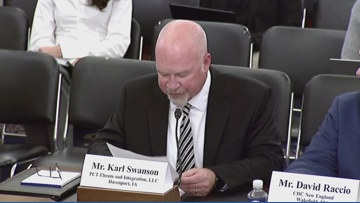Report on the Impact of Federal Student Aid Cuts and Policy Changes on Higher Education

Introduction
The annual National Association of Student Financial Aid Administrators (NASFAA) conference convened in Anaheim, California amid growing concerns regarding recent federal funding cuts. These developments pose significant challenges to student aid professionals and institutions nationwide, coinciding with proposed legislative overhauls of student aid policy.
Context and Federal Funding Cuts
Recent actions by the Trump administration have resulted in substantial reductions in federal funding for higher education, including:
- A $2,000 decrease in the maximum Pell Grant.
- Capping federal loans for graduate degrees.
- Elimination of college-access initiatives such as TRIO.
These cuts increase the financial burden on students and place greater responsibility on colleges to enhance affordability. Concurrently, universities face additional financial pressures from billions lost in research funding and potential state budget reductions.
Implications for Sustainable Development Goals (SDGs)
- SDG 4: Quality Education – Reduced funding threatens equitable access to affordable, quality higher education.
- SDG 10: Reduced Inequalities – Cuts disproportionately affect vulnerable student populations, risking increased educational disparities.
- SDG 17: Partnerships for the Goals – The breakdown of federal, state, and institutional partnerships undermines collaborative efforts to support student aid.
Financial Aid Professionals’ Perspectives
NASFAA President Melanie Storey highlighted the uncertainty faced by financial aid offices, emphasizing that “financial aid budgets thrive on predictability,” which is currently lacking. There is a consensus that students will likely bear increased costs for college due to federal cuts.
Financial aid officials from diverse institutions report a shared concern about the unpredictability of aid availability and stress the importance of preserving need-based student aid amid budget restructuring.
Challenges at Public Research Universities
Senior financial aid administrators at large public research universities, speaking anonymously, indicated that reductions in institutional grants and aid are likely unavoidable. Aid packages already offered or finalized are uncertain due to pending congressional budget reconciliation legislation, which proposes:
- Slashing federal loans for graduate students and student parents.
- Eliminating unsubsidized loans.
- Disqualifying students receiving free tuition from Pell Grant eligibility.
These measures would increase net costs for students and pressure institutions to fill funding gaps, despite their own financial constraints.
State-Level and Institutional Financial Aid Adjustments
Some states, such as Maine, are reconsidering recently expanded free community college programs due to fiscal constraints. Advocates warn that similar reductions may occur nationwide, threatening expanded state aid initiatives.
Additionally, a proposed increase in the endowment tax from 1.4% to 8% could significantly impact wealthy private institutions’ ability to provide institutional grants, thereby affecting aid availability.
Role of Financial Aid Offices in Institutional Strategy
Financial aid offices are pivotal in managing university budgets, balancing aid expenditures with enrollment-driven revenue. As federal and state funding volatility continues, these offices will likely adopt new enrollment management strategies, including:
- Adjusting the ratio of in-state to out-of-state students at public universities.
- Increasing enrollment of wealthier or international students at private institutions.
However, restrictive federal policies may complicate international student recruitment.
Collaborative Efforts and Risks to Student Access
Ken Ferreira, president of the Eastern Association of Student Financial Aid Administrators, described college affordability as a “multipronged partnership” among universities, philanthropic organizations, state policymakers, and the federal government. Proposed budget cuts threaten to fracture this partnership, potentially leading to reduced aid and limited access for vulnerable students.
Institutional Commitment to Aid and Enrollment Competition
Experts like Robert Massa emphasize that institutional aid remains a critical recruitment tool amid enrollment challenges. Despite financial pressures, colleges are unlikely to reduce need-based or merit aid unless a collective decision is made sector-wide.
Conversely, economist Phil Levine warns that net prices will rise and maintaining current aid levels will be difficult under new policies.
Impact on Students and Future Outlook
Students may face significant changes in aid packages between academic years, with some potentially forced to seek private loans or alternative income sources. This uncertainty raises concerns about the accessibility of higher education for incoming classes.
Conclusion
The ongoing federal funding cuts and policy changes pose substantial challenges to higher education affordability and accessibility, directly impacting Sustainable Development Goals related to quality education and reduced inequalities. Financial aid offices and institutions must navigate these uncertainties strategically to mitigate adverse effects on students, particularly those from vulnerable populations. Collaborative efforts among all stakeholders remain essential to uphold equitable access to higher education.
1. Sustainable Development Goals (SDGs) Addressed or Connected
- SDG 4: Quality Education
- The article focuses on issues related to access to higher education, affordability, and financial aid, which are central to ensuring inclusive and equitable quality education and promoting lifelong learning opportunities.
- SDG 10: Reduced Inequalities
- The discussion about cuts to need-based aid and the impact on vulnerable student populations relates to reducing inequalities within and among countries.
- SDG 17: Partnerships for the Goals
- The article mentions the multipronged partnership between universities, philanthropic organizations, state policymakers, and the federal government, highlighting the importance of partnerships to achieve sustainable development.
2. Specific Targets Under Those SDGs Identified
- SDG 4: Quality Education
- Target 4.3: Ensure equal access for all women and men to affordable and quality technical, vocational and tertiary education, including university.
- Target 4.5: Eliminate gender disparities in education and ensure equal access to all levels of education and vocational training for vulnerable populations.
- SDG 10: Reduced Inequalities
- Target 10.2: Empower and promote the social, economic and political inclusion of all, irrespective of age, sex, disability, race, ethnicity, origin, religion or economic or other status.
- SDG 17: Partnerships for the Goals
- Target 17.17: Encourage and promote effective public, public-private and civil society partnerships, building on the experience and resourcing strategies of partnerships.
3. Indicators Mentioned or Implied to Measure Progress
- For SDG 4 Targets:
- Indicator 4.3.1: Participation rate of youth and adults in formal and non-formal education and training in the previous 12 months, by sex.
- Indicator 4.5.1: Parity indices (female/male, rural/urban, bottom/top wealth quintile and others) for all education indicators on this list that can be disaggregated.
- Implied: Monitoring changes in the availability and amount of need-based financial aid and student loan programs to assess affordability and access.
- For SDG 10 Targets:
- Indicator 10.2.1: Proportion of people living below 50 per cent of median income, by age, sex and persons with disabilities.
- Implied: Tracking the impact of financial aid cuts on vulnerable student populations’ enrollment and retention rates.
- For SDG 17 Targets:
- Implied: Assessment of the strength and effectiveness of partnerships between educational institutions, government bodies, and philanthropic organizations in supporting student aid programs.
4. Table of SDGs, Targets, and Indicators
| SDGs | Targets | Indicators |
|---|---|---|
| SDG 4: Quality Education |
|
|
| SDG 10: Reduced Inequalities |
|
|
| SDG 17: Partnerships for the Goals |
|
|
Source: insidehighered.com







